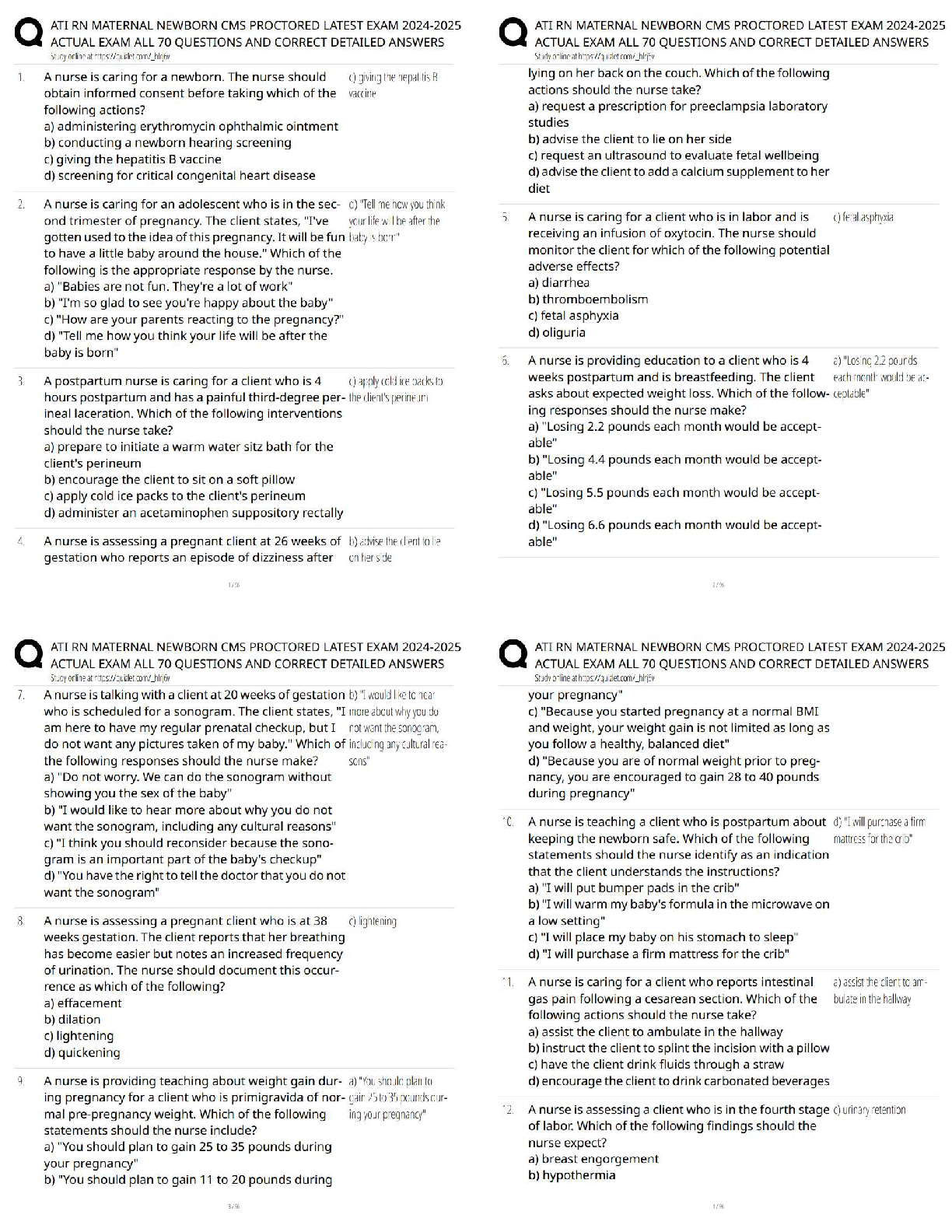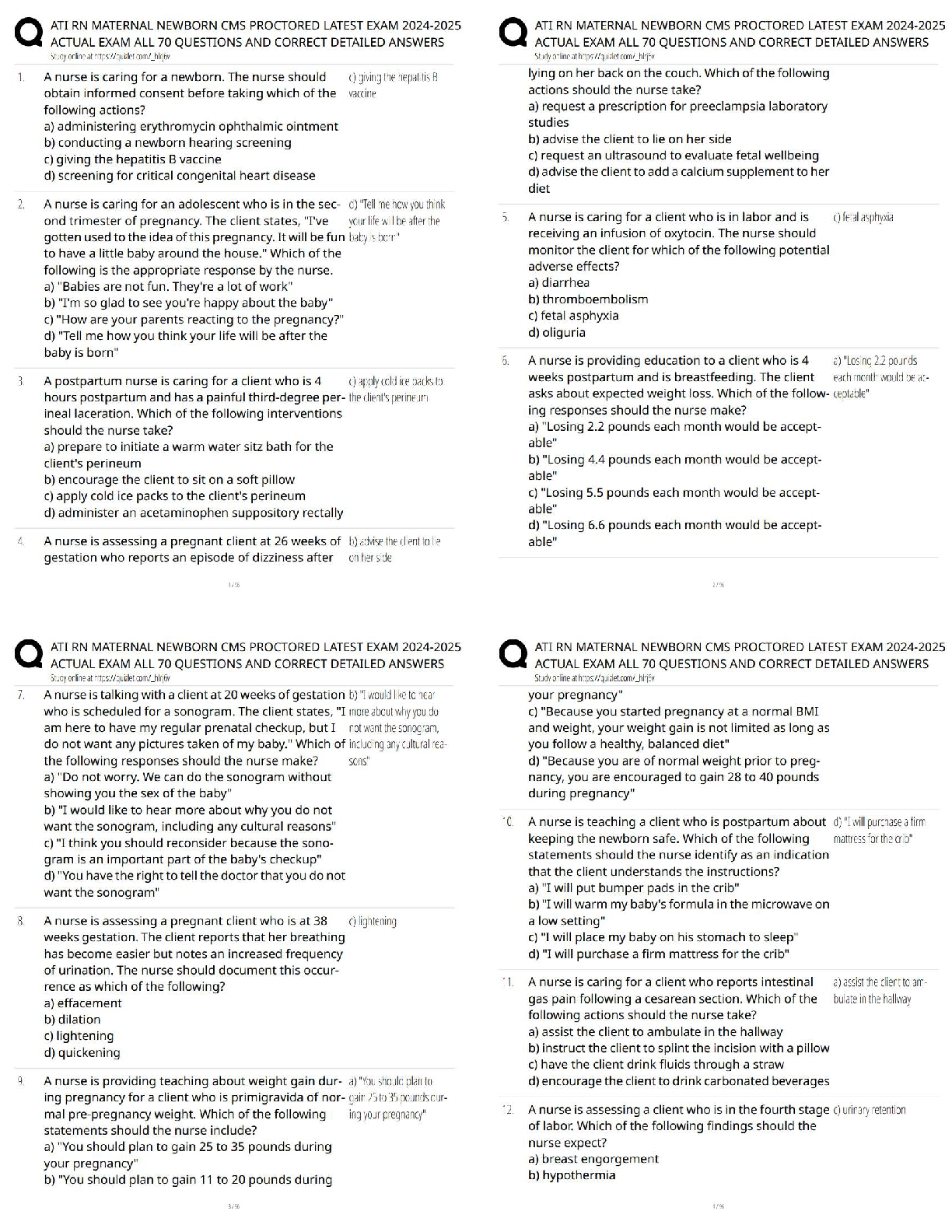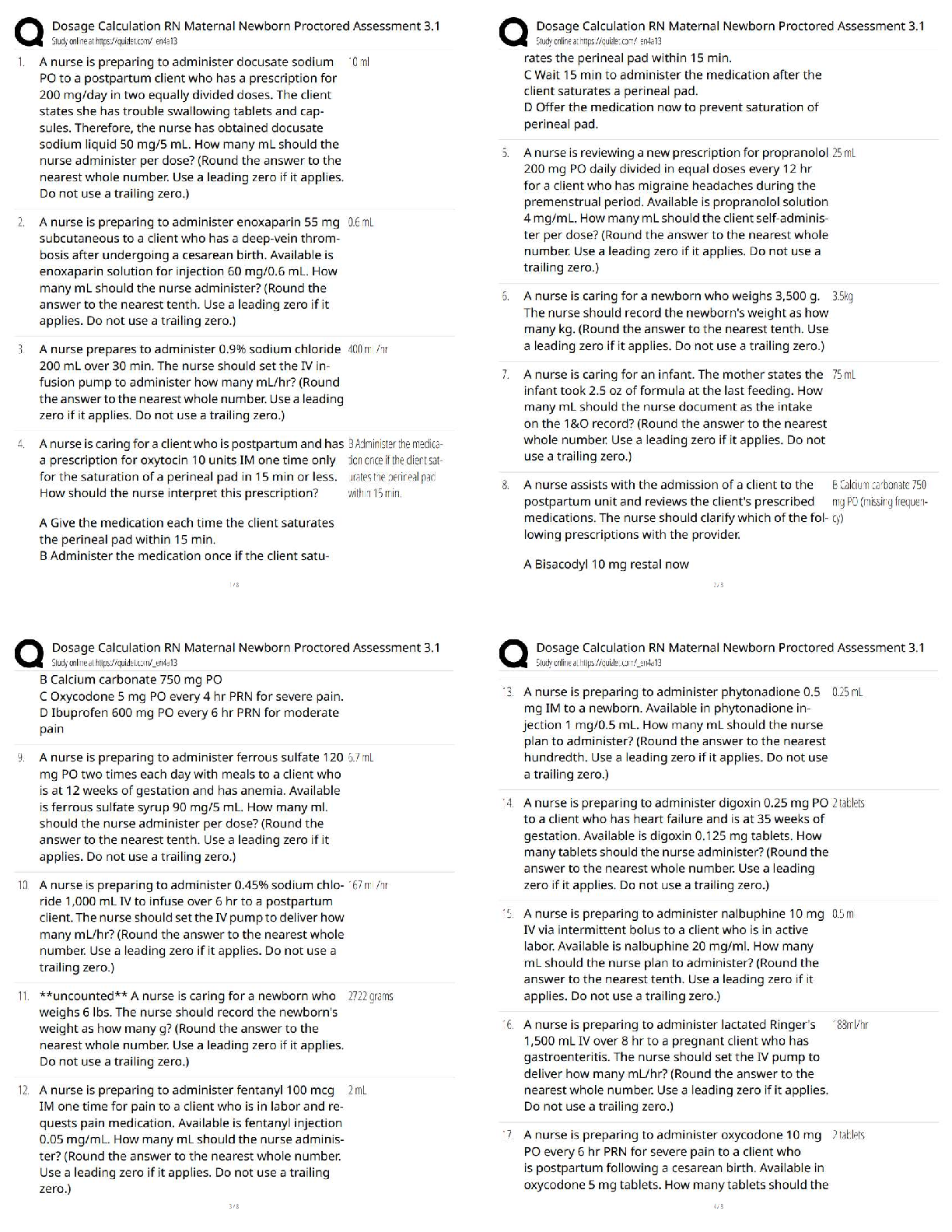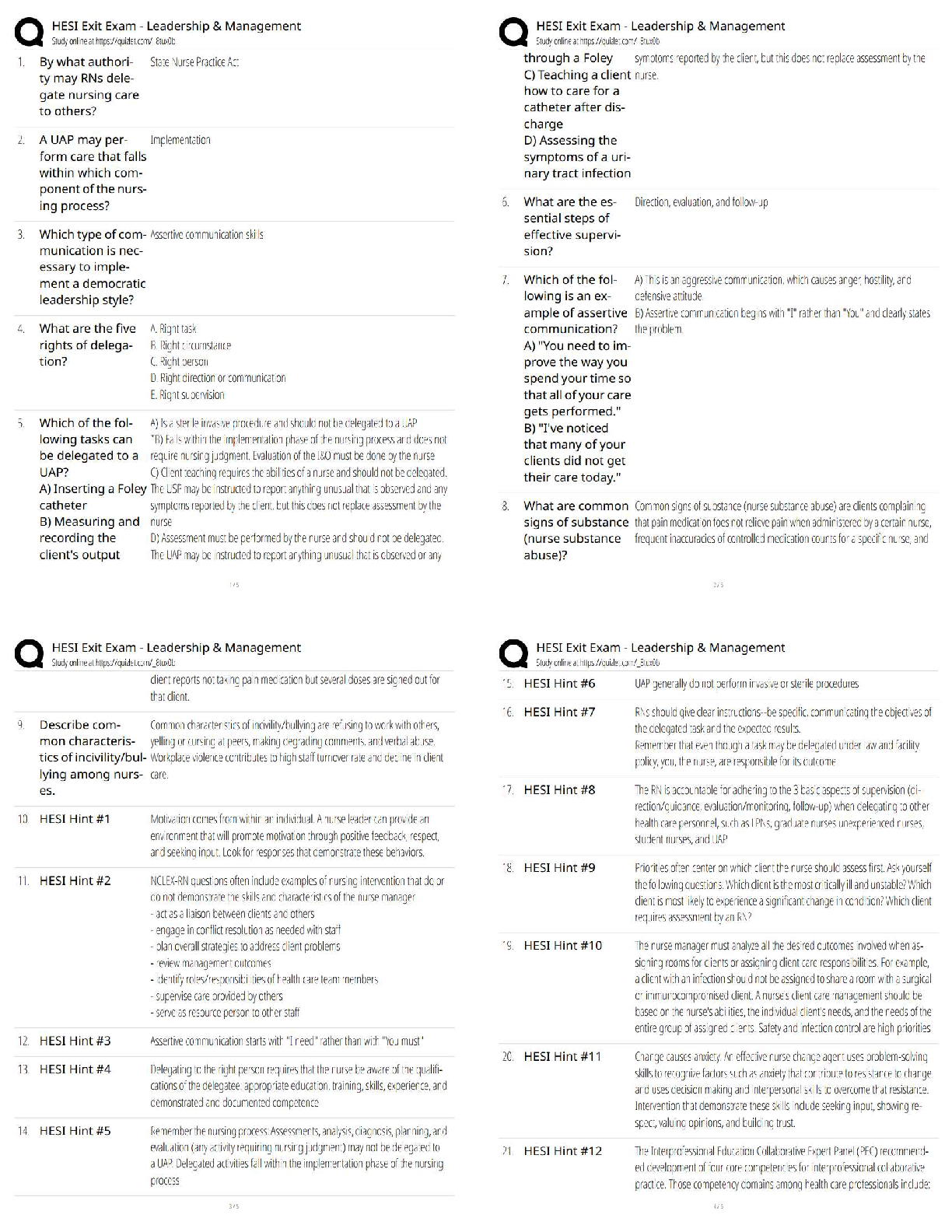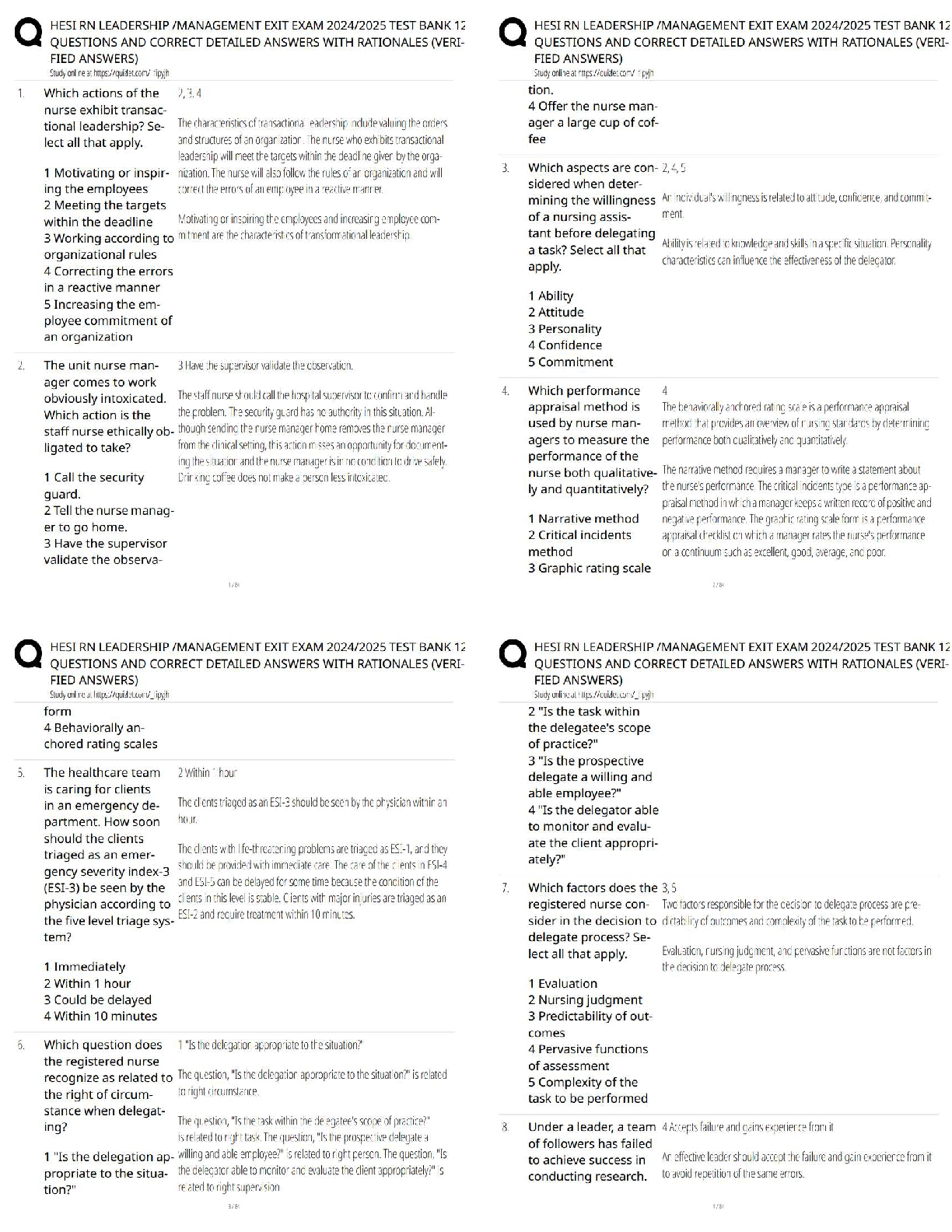BioChemistry > QUESTIONS & ANSWERS > Brain Booster questions and answer solved solution 2020 docs (All)
Brain Booster questions and answer solved solution 2020 docs
Document Content and Description Below
Brain Booster questions and answer solved solution 2020 docs Package Title: Pratt & Cornely Test Bank Course Title: Pratt & Cornely Chapter Number: 1 Question type: Multiple Choice 1) ... Which of the following is the most abundant element in the human body? A) nitrogen B) carbon C) oxygen D) phosphorous E) none of the above 2) Of the following amino acids, which contains an alcohol? a b c d A) a B) b C) c D) d E) all of the above 3) Which of the major types of biomolecules is never found in a polymeric form? A) amino acids B) carbohydrates C) nucleotides https://wwwD.co)ulrsiephiedros.com/file/28944883/biochem-chapter-1pdf/ E) none of the above 4) Which of the following biopolymers is correctly paired with the bond that forms between the monomers? A) protein: ester bond B) polysaccharide: glycosidic bond C) DNA: phosphate bond D) RNA: phosphate bond E) all of the above 5) Which of the biopolymers is correctly paired with its major function? A) protein: information encoding B) nucleic acids: energy storage C) lipids: information encoding D) polysaccharide: energy storage E) none of the above 6) What functional groups are present in the following molecule? A) amine and carboxylic acid B) amine, ketone and carboxylic acid C) amine, amide and carboxylic acid D) alcohol, amine, amide and carboxylic acid E) none of the above are correct 7) Which elements are found in simple carbohydrates? A) carbon, hydrogen and oxygen B) carbon, hydrogen, oxygen and nitrogen C) carbon, hydrogen, oxygen and phosphorous D) carbon, hydrogen, oxygen and sulfur E) none of the above 8) Entropy is used to measure . A) free energy B) heat content C) temperature D) randomness E) all of the above 9) A spontaneous process always has . A) DG < 0 B) DG > 0 C) DH < 0 D) DH > 0 E) none of the above 10) If a reaction at 37C has a DH of 23 kJ/mol and a DS of 337 J/K•mol, what is the DG for the reaction? A) 65 kJ/mol https://wwwB.co)u-rs4e2herkoJ.c/omm/ofille/28944883/biochem-chapter-1pdf/ C) 18 kJ/mol D) -19 kJ/mol E) none of the above 11) An exergonic process . A) occurs without the addition of free energy B) has a DG < 0 C) is spontaneous D) will have more products than reactants at equilibrium E) all of the above 12) Which of the following molecules contains the most oxidized form of carbon? A) acetaldehyde B) ethanol C) acetic acid D) ethylene E) carbon dioxide 13) If the following two reactions were coupled, what would be the DG for the overall exergonic reaction? ATP + H2O ADP + Pi DG = -31 kJ/mol Glucose + Pi glucose-1-phosphate + H2O DG = 21 kJ/mol A) -52 kJ/mol B) -10 kJ/mol C) 10 kJ/mol D) 52 kJ/mol E) none of the above 14) A gaseous mixture of hydrogen, water, ammonia and methane can produce which of the biomolecules when exposed to an electrical discharge (such as lightening)? A) carbohydrates B) nucleotides C) lipids D) amino acids E) none of the above 15) Which of the following explains how nucleotides might have polymerized into nucleic acids in the prebiotic world? A) a mixture of hydrogen cyanide, formaldehyde and phosphate can form nucleotides in the presence of an electrical discharge B) nucleotides formed short polymers in the high temperatures of hydrothermal vents C) nucleotides used the surface of clay as a catalyst to form polymers D) catalysts such as iron sulfide allow for the formation of new C—C bonds E) all of the above 16) Photosynthetic organisms use energy from the sun to reduce to . A) formaldehyde; ethanol B) CO2; ethanol C) CO2; carbohydrates D) CO2; oxygen E) none of the above 17) The biological classification system categorizes organisms into which of the following domains? A) bacteria and eukarya https://wwwB.co)uprsreohekroa.rcoyma/failne/d289e4u4k88a3r/ybiaochem-chapter-1pdf/ C) archaea and eukarya D) bacteria, eukarya and prokarya E) bacteria, archaea and eukarya 18) Which of the following is a major difference between eukaryotic and prokaryotic cells? A) eukaryotic cells contain a nucleus, prokaryotic cells do not B) eukaryotic cells contain organelles, prokaryotic cells do not C) eukaryotic cells are much larger than prokaryotic cells D) eukaryotic cells often form multicellular organisms, prokaryotic cells do not E) all of the above 19) The similarity of one organism to another (for example a bacteria versus a human) is most easily done by comparing which biopolymer? A) nucleic acids B) polysaccharides C) proteins D) lipids E) all of the above [Show More]
Last updated: 3 years ago
Preview 1 out of 7 pages

Buy this document to get the full access instantly
Instant Download Access after purchase
Buy NowInstant download
We Accept:

Reviews( 0 )
$9.50
Can't find what you want? Try our AI powered Search
Document information
Connected school, study & course
About the document
Uploaded On
Nov 01, 2020
Number of pages
7
Written in
All
Additional information
This document has been written for:
Uploaded
Nov 01, 2020
Downloads
0
Views
117

 answers.png)












